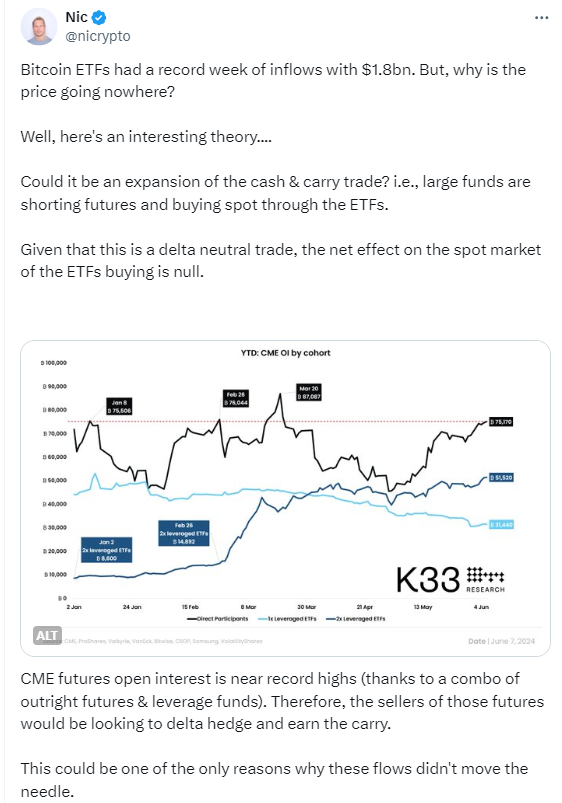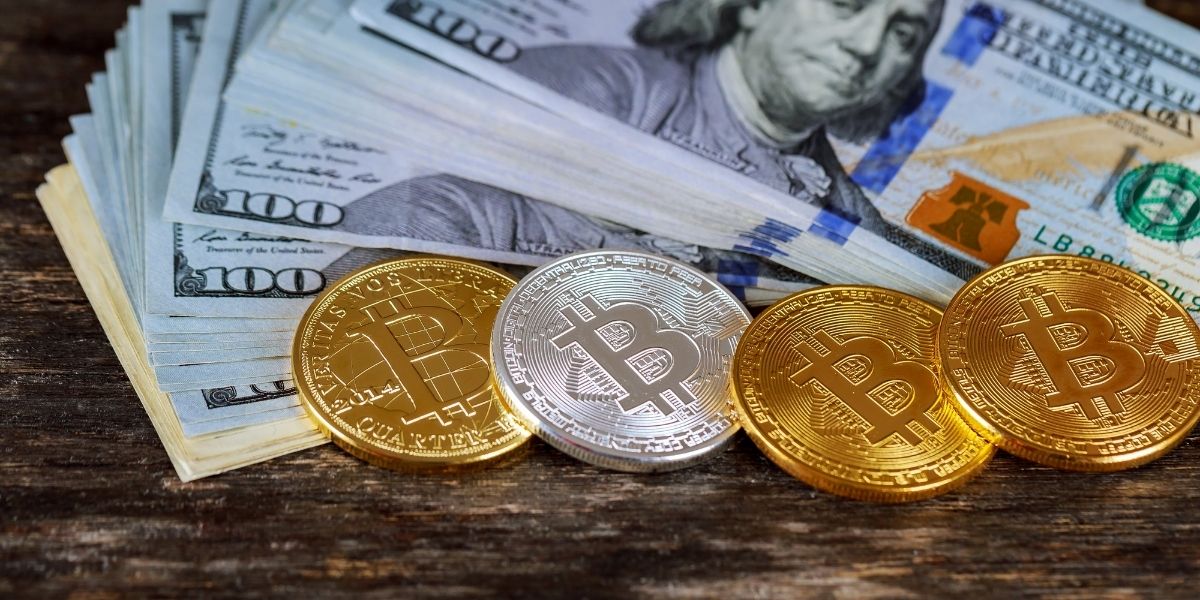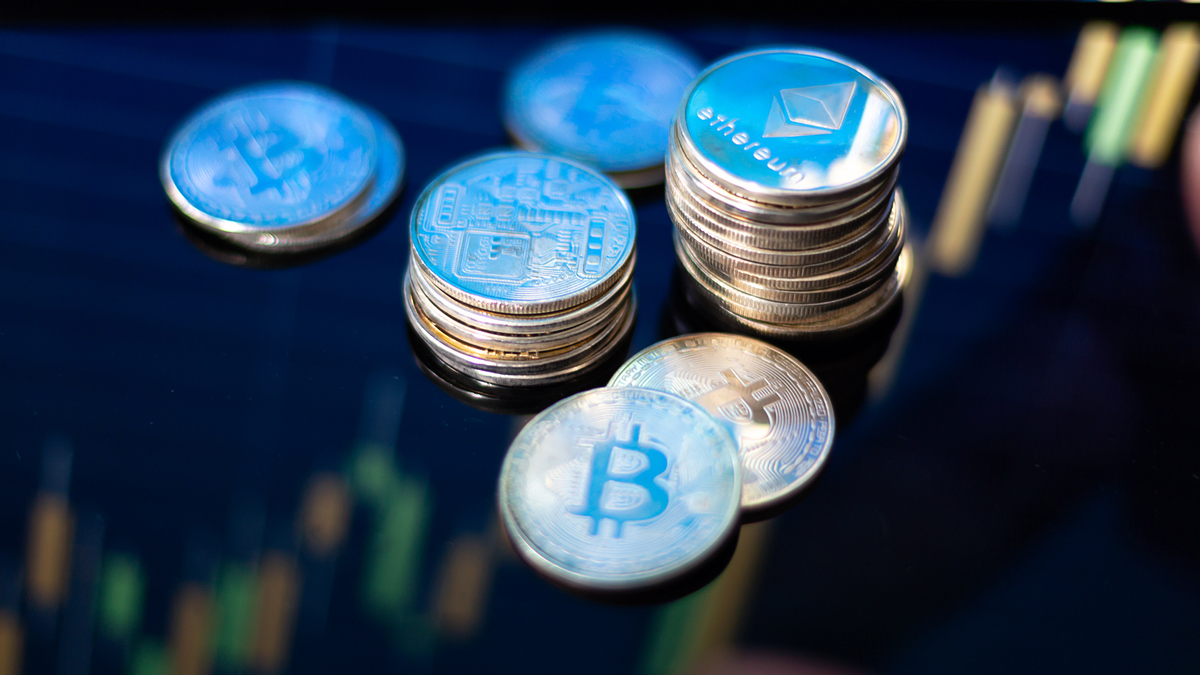Bitcoin recently experienced a significant milestone with a record $1.8 billion inflow into Bitcoin ETFs. Despite this substantial investment, the Bitcoin price remained relatively stagnant. This inconsistency surprised many investors and analysts who expected the fund inflows to boost the price. Coinbureau’s CEO and co-founder Nic offers an intriguing theory that could explain this phenomenon.
Has the Role of Bitcoin ETFs Diminished?
The theory revolves around a trading strategy known as “cash and carry” trading. This strategy involves large funds taking short positions in Bitcoin futures while simultaneously buying spot Bitcoin through ETFs. These funds aim to profit from the price difference between the two markets by shorting the futures and buying the underlying asset. In this context, “delta neutral” means the position is designed to hedge against market risk, resulting in a net zero effect on the spot market despite ETF inflows.

One of the most critical elements supporting this theory is the current state of the CME (Chicago Mercantile Exchange) futures market. Open interest in Bitcoin futures on the CME has approached record levels. This increase in futures trading results from a combination of open futures positions and leveraged funds. These futures traders, especially sellers, manage their risk exposure through delta hedging. Delta hedging involves taking offsetting positions to mitigate the impact of price movements in the underlying asset, in this case, Bitcoin.
Delta hedging by these sellers may be absorbing the buying pressure from ETFs. While ETFs create upward pressure on the spot price by purchasing Bitcoin, futures contract sellers simultaneously execute counteracting trades to maintain a balanced risk profile. This balancing act could neutralize the potential price impact of such significant inflows into the Bitcoin market.
Why Didn’t Bitcoin’s Price Increase?
Essentially, record inflows into Bitcoin ETFs are balanced by sophisticated trading strategies in the futures market. This dynamic may explain why Bitcoin’s price did not experience a corresponding increase despite the $1.8 billion inflow. The interaction between spot market purchases through ETFs and delta-neutral positioning in the futures market creates a scenario where significant financial movements do not translate into substantial price changes.
Understanding this phenomenon is crucial for investors and market observers. The question this week was why Bitcoin’s price did not rise despite ETF inflows. This situation highlights the complex mechanisms at play in the cryptocurrency market, where large-scale investments do not always lead to expected outcomes due to sophisticated trading strategies.

 Türkçe
Türkçe Español
Español








